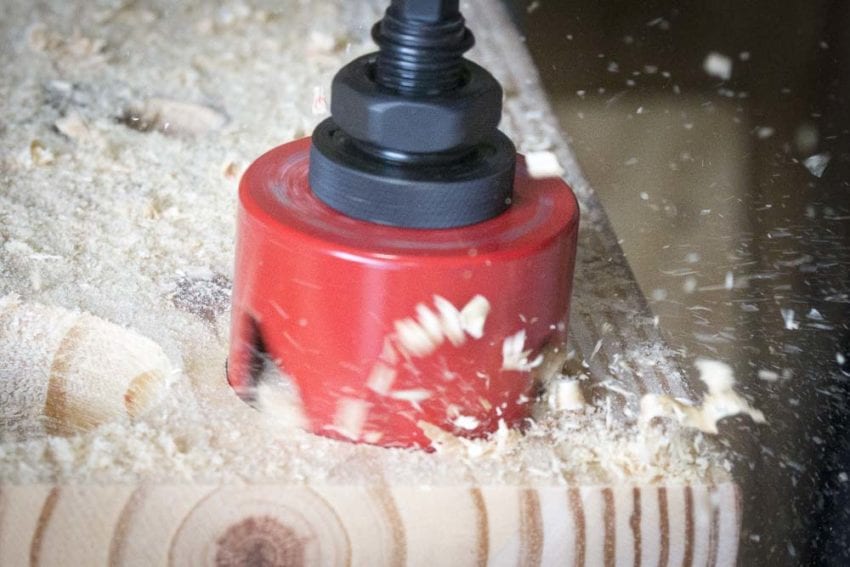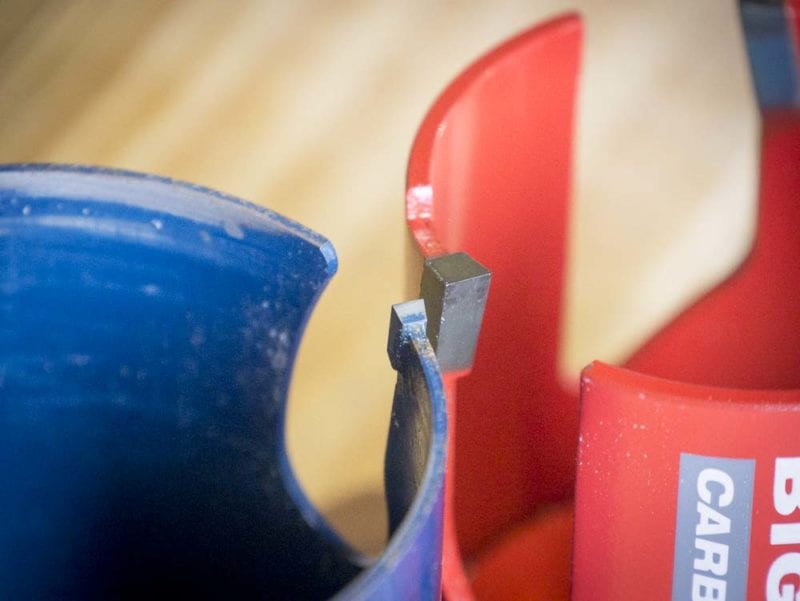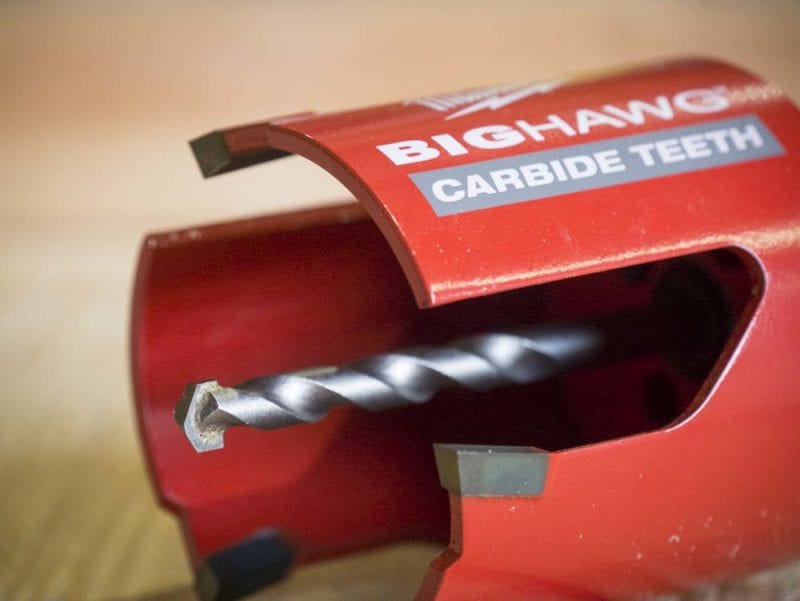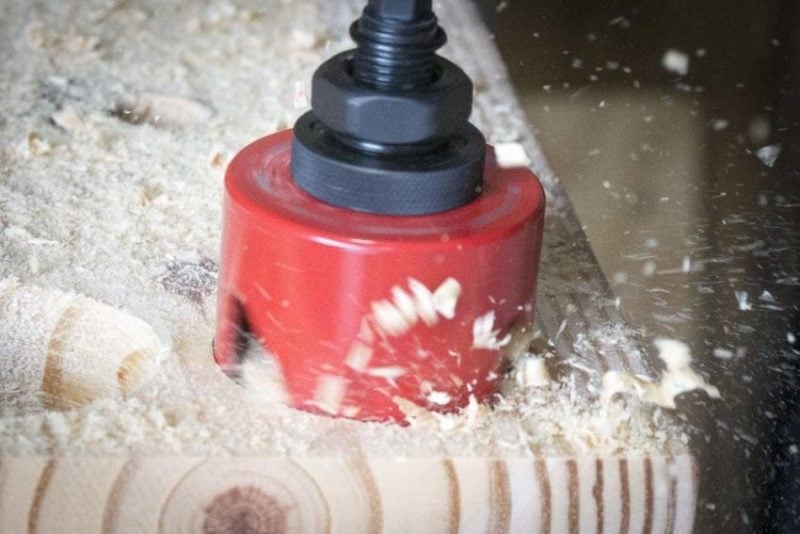Milwaukee isn’t new to the hole saw game, so it’s not a big surprise to see them working on innovation in the space. As they push deeper into carbide accessories, it makes sense to see a carbide-tipped hole saw. Enter stage left the Milwaukee Big Hawg Carbide Hole Saw.
Here’s a quick look at what Milwaukee has to say about their new line.
Milwaukee Big Hawg Carbide Hole Saw Key Features
- 50X Life in nail-embedded wood & abrasive material applications
- Cuts wood, nails, shingles, cement board, plaster and more
- Cuts 1000+ more nails
- 5X Faster cuts
- 10X Larger Carbide teeth
- 3 Tooth design for fast aggressive cuts
- Carbide tipped multi-material pilot bit for increased material versatility
- Thicker backer for extreme life in demanding applications
- Optimized slot design for fast plug removal
- Enlarged braze surface for stronger bond to the Carbide teeth
Our Take
There are a lot of impressive claims there and I haven’t had the opportunity to test every single one of them. I’m going to focus on the carbide tip for starters. It’s large, really large. It’s pretty obvious when you first look at it, but even more so when you put it up against other popular brands like Bosch or Diablo.
Rough Start?
My first thought was that much carbide would surely create a rough cutting experience. However, with Milwaukee’s M18 Fuel One-Key Hammer Drill in hand, it cuts much smoother than I expected. A closer look at the teeth reveals that the geometry intentionally slopes slightly inward, so the cut is stabilized as it slices wood away. My concern of an overly rough cut turns out to be unfounded.
Need for Speed
When it comes to cutting speed, the Milwaukee Big Hawg is fast. It’s understandable to think that the larger teeth would make a slower cut since it’s engaging more wood, or at least bog the drill down easier. That doesn’t seem to be the case, either. With the 2-9/16″ review sample I received, I cut in high speed without an issue. I can certainly bind it up if I’m trying to, but it’s no worse than the other ones I use.
The Core Issue
There’s a perhaps unintended benefit of these large carbide teeth when it comes to core removal. Each tooth is centered, so it cuts inside the wall as much as it cuts outside. The core you cut is smaller than the walls of the hole saw, so it falls right out. At least that’s the case in dry treated and untreated pine. I expect wet wood will still swell from the heat. When that happens, there are large slots to help pry them out.
The Bottom Line
This much carbide on the cutting surface seems like overkill and possibly a detriment to the hole-making experience. However, that’s not the case on our initial testing. Moreover, what the Milwaukee Big Hawg opens up in terms of what you can effectively cut will save you money and time over using other hole saws in less-than-ideal conditions.
Milwaukee Big Hawg Carbide Hole Saw Specifications
- Model: Milwaukee 49-56-9290
- Depth of Cut: 2.34″
- Sizes included: 2-1/8″, 2-1/4″, 2-9/16″, 3″, 3-58″, 4-1/4″
- Pilot Bit Material: Carbide Tipped
- Price: Varies






